Abstract
A host range mutant was isolated from a bacteriophage that attacked Streptococcus cremoris 114. The mutant was able to adsorb and grow on S. cremoris 266, where the parent phage could not. The mutant phage was unable to adsorb to the original bacterial host, S. cremoris 114. The change in host range was accompanied by an alteration in the neutralization antigen as shown by a change in neutralization rate by an anti-phage serum. Serum-blocking experiments confirmed the difference in neutralization antigen between parent and mutant phages. The two phages nevertheless had similar complement fixation antigens, confirming that one was a mutant derived from the other. A distinction between complement fixation and neutralization antigens, similar to that found for the coliphages and staphylococcal phages, has therefore been demonstrated for two lactic streptococcal phages.
Full text
PDF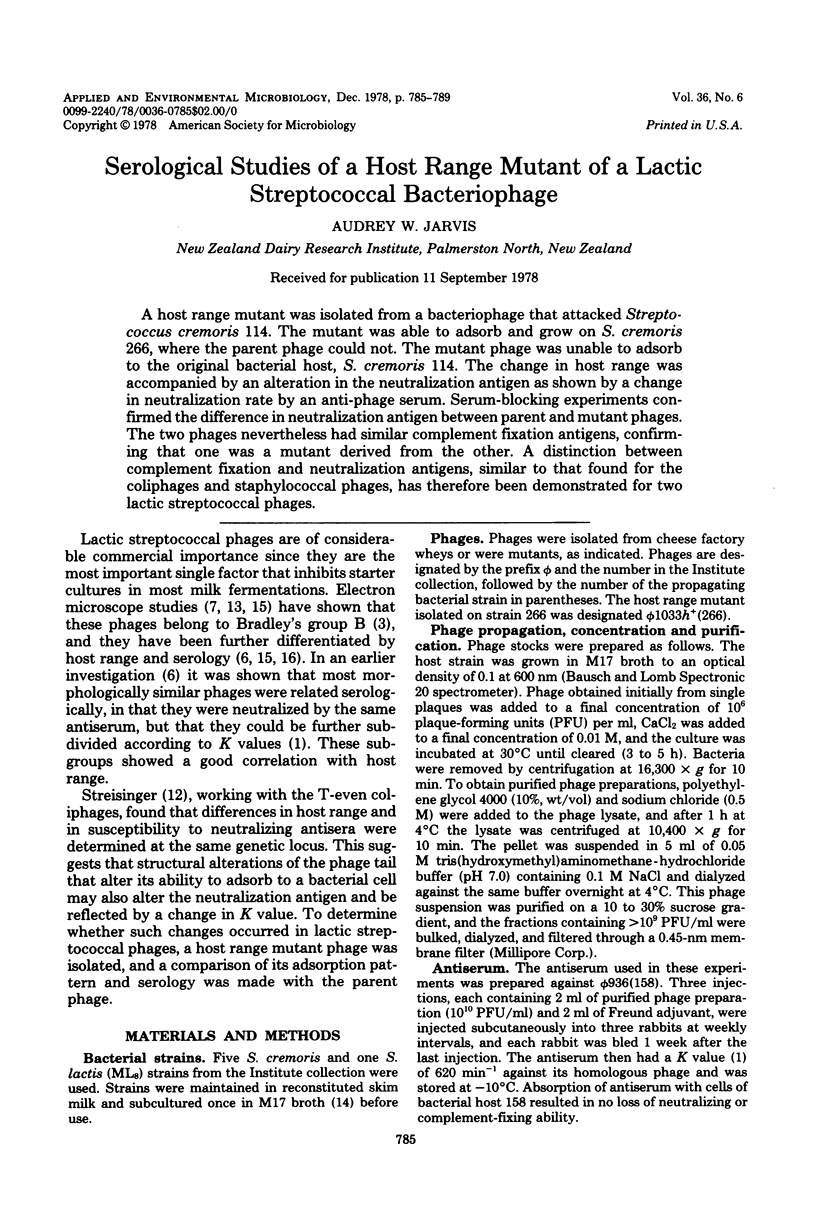
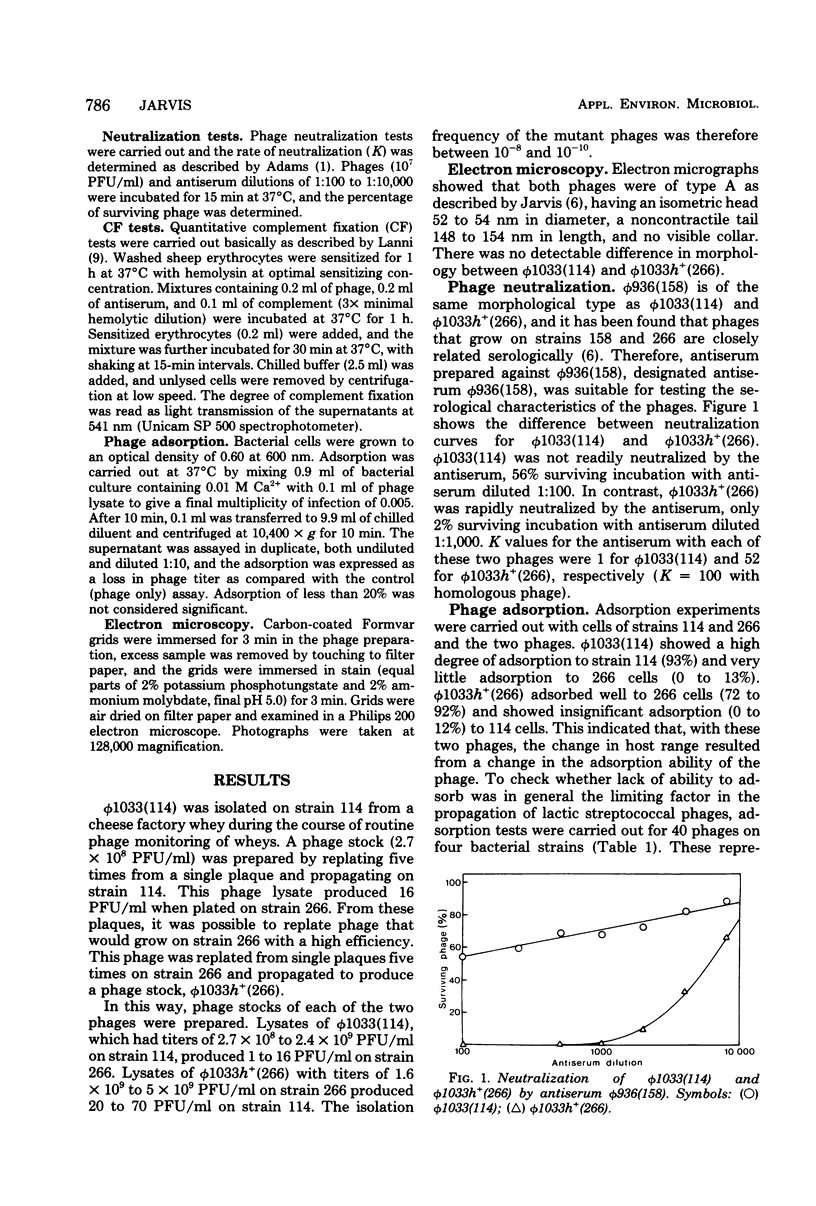
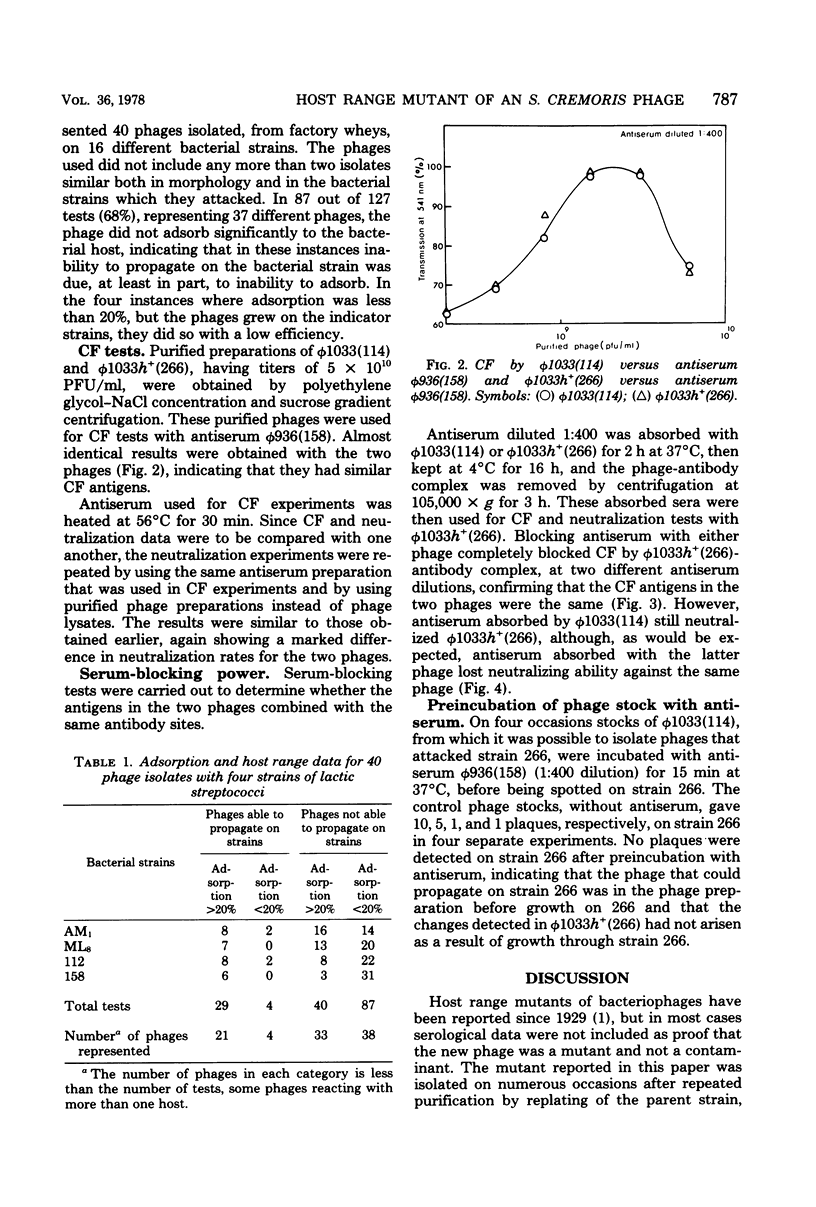
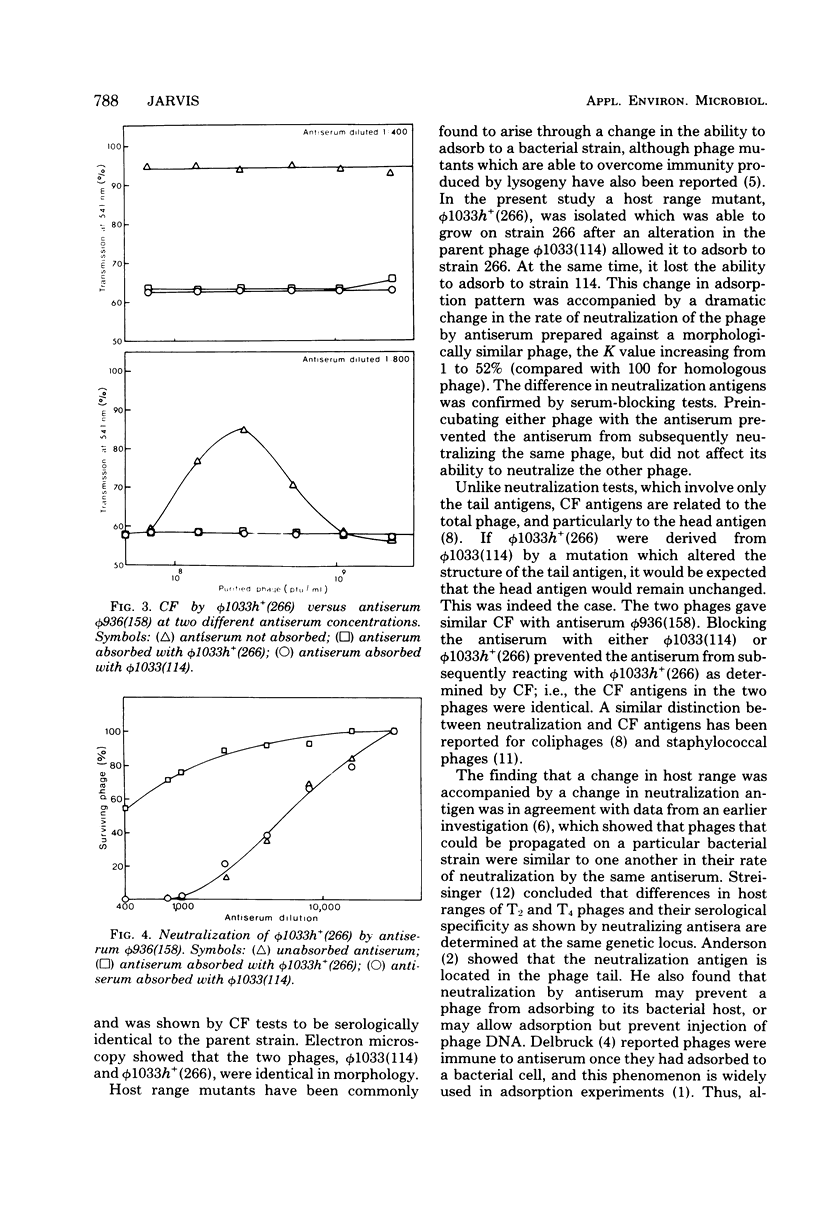
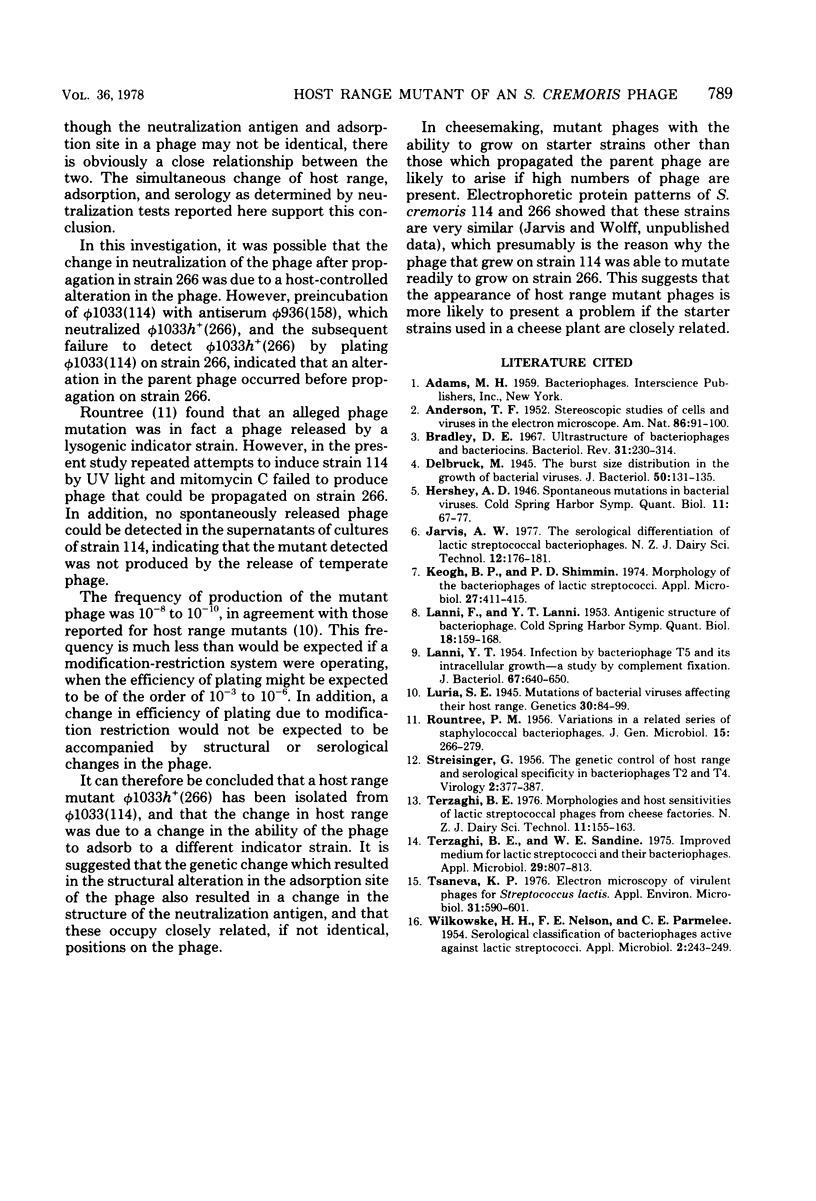
Selected References
These references are in PubMed. This may not be the complete list of references from this article.
- Bradley D. E. Ultrastructure of bacteriophage and bacteriocins. Bacteriol Rev. 1967 Dec;31(4):230–314. doi: 10.1128/br.31.4.230-314.1967. [DOI] [PMC free article] [PubMed] [Google Scholar]
- Delbrück M. The Burst Size Distribution in the Growth of Bacterial Viruses (Bacteriophages). J Bacteriol. 1945 Aug;50(2):131–135. [PMC free article] [PubMed] [Google Scholar]
- Keogh B. P., Shimmin P. D. Morphology of the bacteriophages of lactic streptococci. Appl Microbiol. 1974 Feb;27(2):411–415. doi: 10.1128/am.27.2.411-415.1974. [DOI] [PMC free article] [PubMed] [Google Scholar]
- LANNI F., LANNI Y. T. Antigenic structure of bacteriophage. Cold Spring Harb Symp Quant Biol. 1953;18:159–168. doi: 10.1101/sqb.1953.018.01.026. [DOI] [PubMed] [Google Scholar]
- LANNI Y. T. Infection by bacteriophage T5 and its intracellular growth; a study by complement fixation. J Bacteriol. 1954 Jun;67(6):640–650. doi: 10.1128/jb.67.6.640-650.1954. [DOI] [PMC free article] [PubMed] [Google Scholar]
- Luria S E. Mutations of Bacterial Viruses Affecting Their Host Range. Genetics. 1945 Jan;30(1):84–99. doi: 10.1093/genetics/30.1.84. [DOI] [PMC free article] [PubMed] [Google Scholar]
- ROUNTREE P. M. Variations in a related series of staphylococcal bacteriophages. J Gen Microbiol. 1956 Oct;15(2):266–279. doi: 10.1099/00221287-15-2-266. [DOI] [PubMed] [Google Scholar]
- STREISINGER G. The genetic control of host range and serological specificity in bacteriophages T2 and T4. Virology. 1956 Jun;2(3):377–387. doi: 10.1016/0042-6822(56)90032-0. [DOI] [PubMed] [Google Scholar]
- Terzaghi B. E., Sandine W. E. Improved medium for lactic streptococci and their bacteriophages. Appl Microbiol. 1975 Jun;29(6):807–813. doi: 10.1128/am.29.6.807-813.1975. [DOI] [PMC free article] [PubMed] [Google Scholar]
- Tsaneva K. P. Electron microscopy of virulent phages for Streptococcus lactis. Appl Environ Microbiol. 1976 Apr;31(4):590–601. doi: 10.1128/aem.31.4.590-601.1976. [DOI] [PMC free article] [PubMed] [Google Scholar]
- WILKOWSKE H. H., NELSON F. E., PARMELEE C. E. Serological classification of bacteriophages active against lactic streptococci. Appl Microbiol. 1954 Sep;2(5):243–249. doi: 10.1128/am.2.5.243-249.1954. [DOI] [PMC free article] [PubMed] [Google Scholar]


